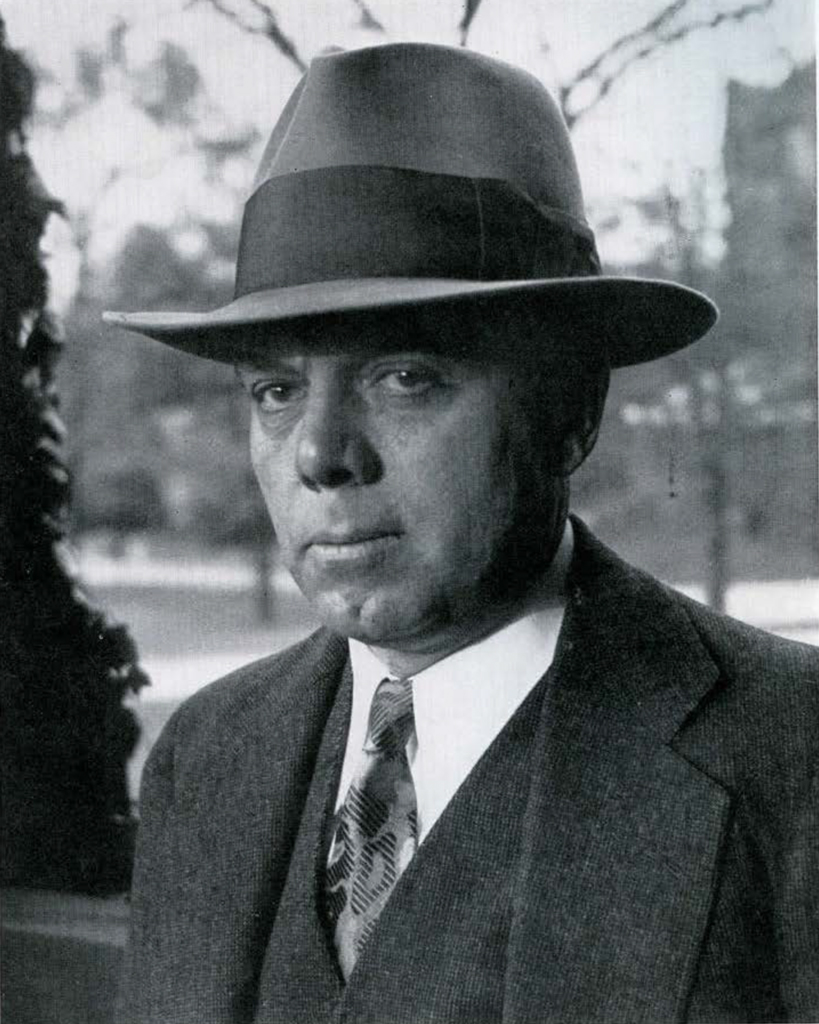On February 6, 1950, Dr. Frank G. Speck passed away at the University Hospital. He had been in failing health for several years, but still insisted on carrying on his research and some of his teaching load. In fact he finally collapsed, a few days before his death, while taking part in Iroquois festivities at Red House, New York.

Image Number: 71430
Dr. Speck should be considered as the founder of anthropology at the University of Pennsylvania. From 1886 until 1899 Dr. Daniel Garrison Brinton had given courses that would today be considered anthropological, in various departments of the University, but these were open only to graduate students. After Brinton’s death in 1899 Stewart Culin gave a few courses in 1900-1902, but the first undergraduate courses under the title of “Anthropology” were given by Dr. George Byron Gordon in 1904-1907. However, the Department of Anthropology was organized under Dr. Speck in 1910, and for forty years he was the senior member, and for most of that time the chairman.
Frank Speck came to this University as Harrison Fellow in Anthropology in 1907 and immediately began to assist Dr. Gordon with the teaching. Receiving his Ph.D. degree here in 1908 he was immediately appointed Instructor and gave some courses in 1908. He was made Assistant Professor in 1911 and Professor in 1925.
From 1907 until 1911 Dr. Speck was intimately associated with the University Museum. All the courses in anthropology were given in the Museum, either in classrooms or in the then lecture room at the end of the west wing, and Speck had his office in the building. He wrote three monographs published in early numbers of the Museum series: “Notes on the Ethnology of the Osage Indians” (Transactions, II, 2, 1907), ”Ethnology of the Yuchi Indians” (Anthropological Publications, I, 1, 1909), and “Ceremonial Songs of the Creek and Yuchi Indians” (id., I, 2, 1911). In the latter year he was on the Museum staff as “Acting Assistant Curator of General Ethnology.”
Born in Brooklyn, New York, November 8, 1881, Speck grew up in Hackensack, New Jersey, and from earliest boyhood was fascinated by the American Indian. This interest was directed into scientific channels when he went to Columbia University and studied under the old master, Franz Boas. Graduating there in 1904 he took his master’s degree the following year and continued for his doctorate, but instead, in 1907, came to Pennsylvania where thenceforth he made his home, living in Swarthmore.
Dr. Speck was also the founder of the Philadelphia Anthropological Society, which began over forty years ago as an unorganized social group meeting for dinner in a local restaurant; after its reorganization he was President from 1920 to 1922. He was also President of the American Folklore Society the same years, and Vice-president of the American Anthropological Association in 1945. He was for many years, 1921-1938, an Associate Editor of the American Anthropologist, and was a member of the National Research Council in 1925. Since 1923 he was Lecturer in Anthropology at Swarthmore College. He was awarded a star in the biographical directory, American Men of Science, in 1921 as one of the country’s foremost scientists; naturally the number of anthropologists in this group was very small.
He was a prolific writer. In addition to several books, many large monographs in scientific series, and frequent articles in anthropological journals, he was constantly publishing short articles in little-known periodicals. His total bibliography consists of more than three hundred items.
While Speck was well acquainted with world ethnology, it was with the American Indian that he felt a special personal bond, and especially with the Algonkian and Iroquoian groups of the Eastern United States. While he did some research with the southeastern groups, he will be remembered particularly for his work on the eastern Indians, and especially with the remnants of the small disappearing groups; he was probably the recognized authority on these. Every vacation period, short or long, he spent largely with one of these Indian groups. Probably his major single contribution to our knowledge of these people was his studies on the family hunting-territories, calling attention to this quasi-private “ownership” of land.
Frank Speck’s contacts with his students were always on a very personal level, as friends rather than as teacher and scholar; he encouraged them to call him by his first name, to eat a snack with him, and to accompany him on field trips. His large museum-like office on the fourth floor of College Hall always held several students working at their research, or helping Frank with his, or perhaps reading from his voluminous library. He was equally beloved by them and by his colleagues in the Department, most of whom he had himself trained. His place will be difficult to fill at Pennsylvania.
The University Museum is honored to publish the present paper, one of Dr. Speck’s last contributions to the understanding of the people he knew so well.
J.A.M.

